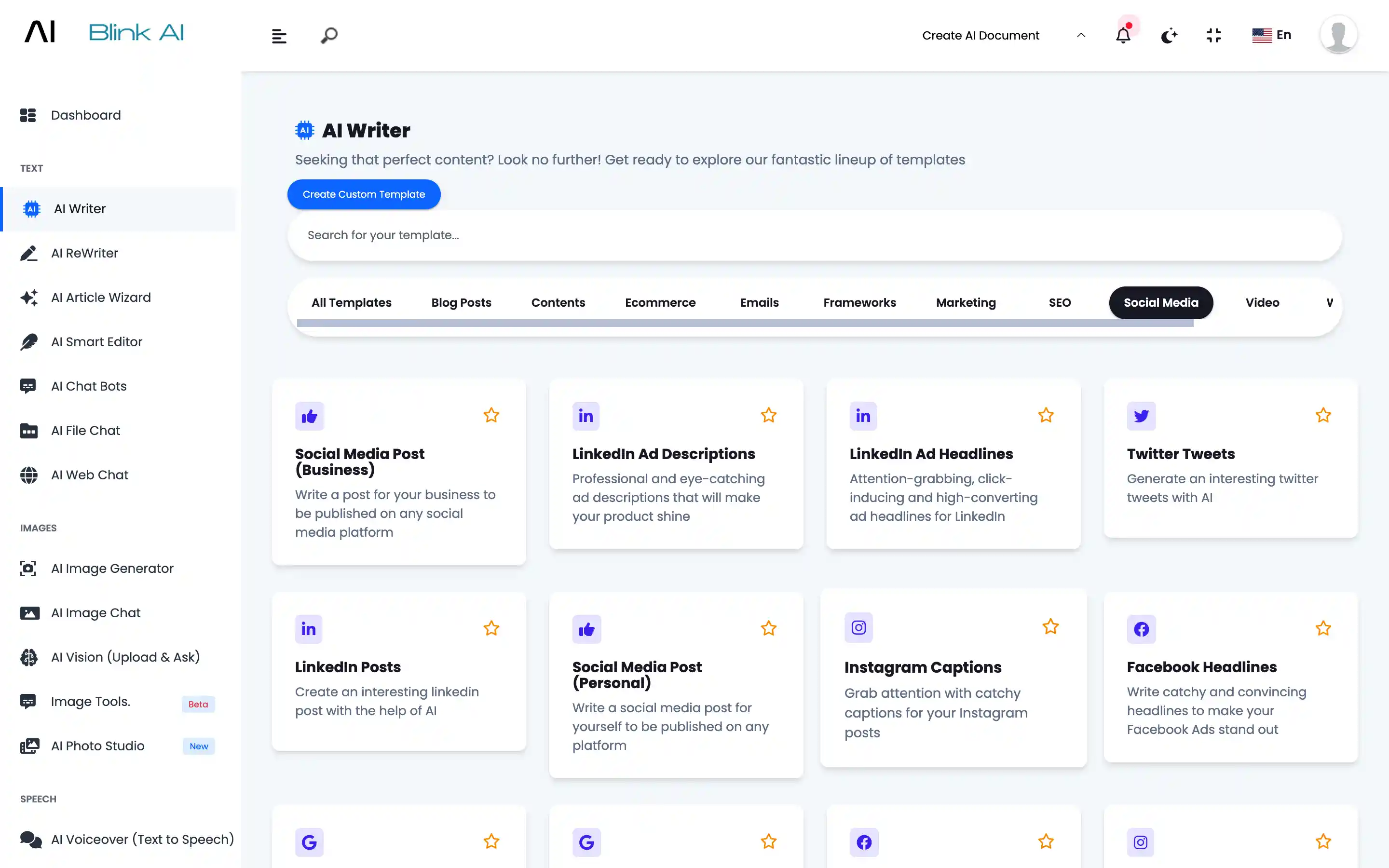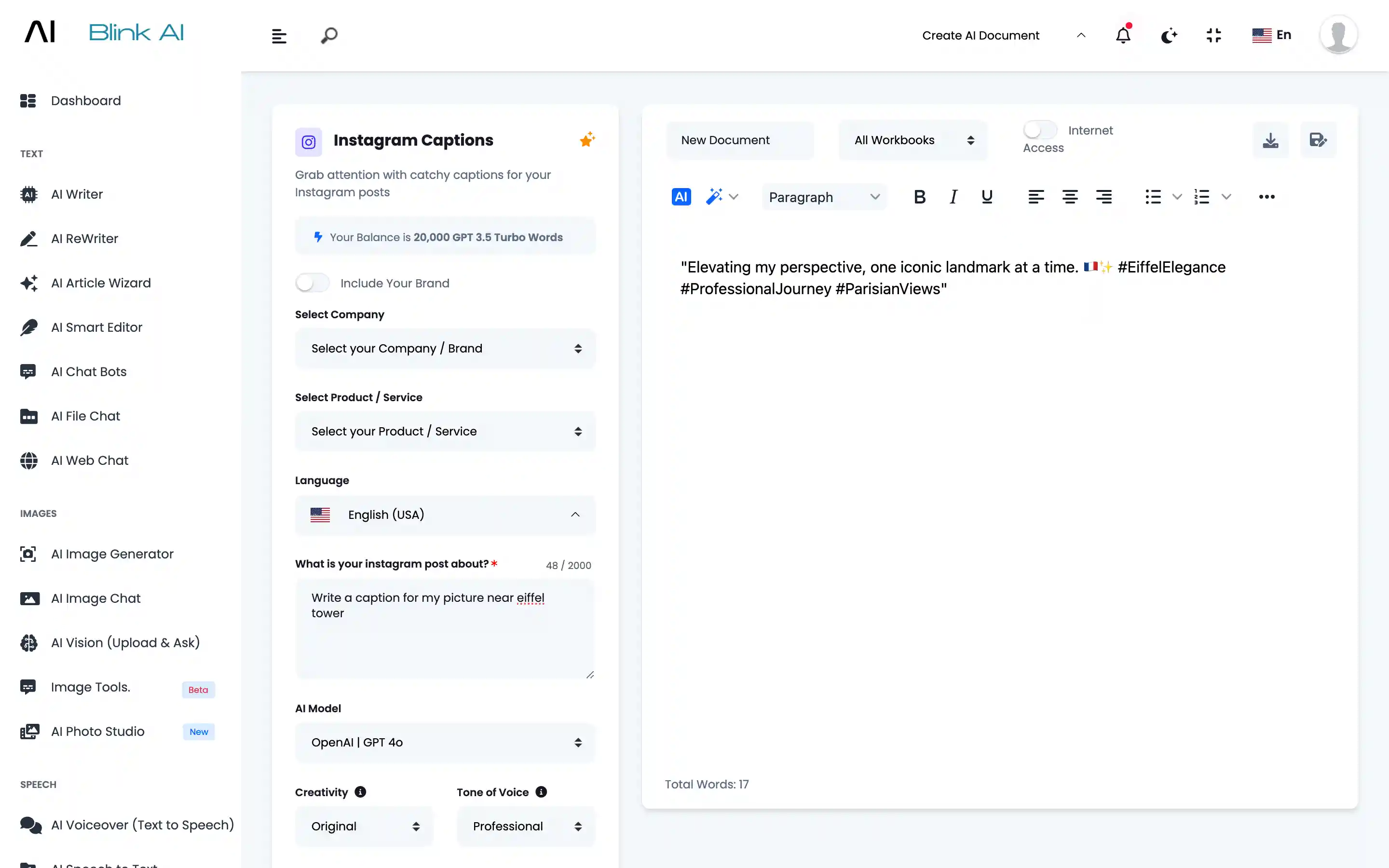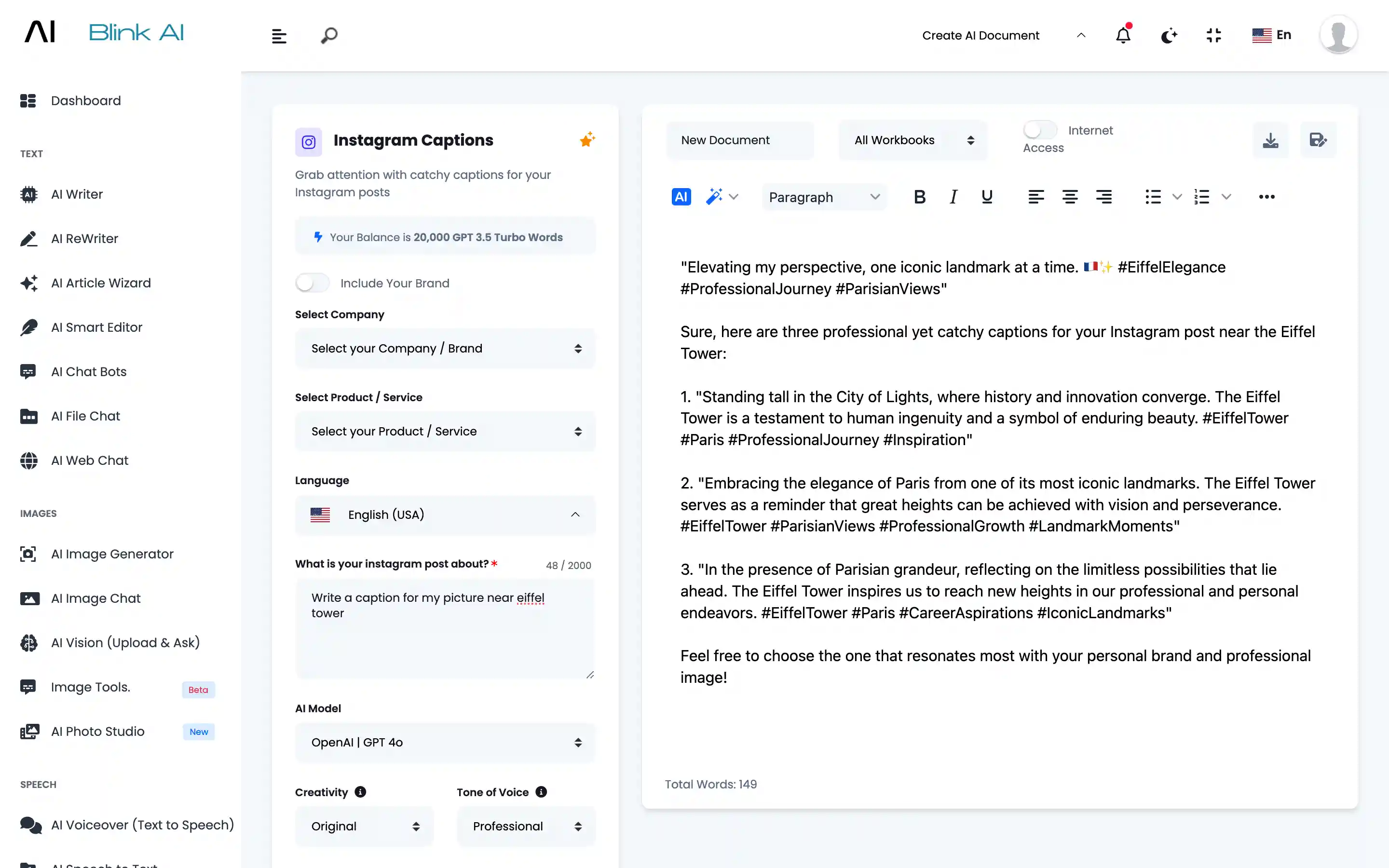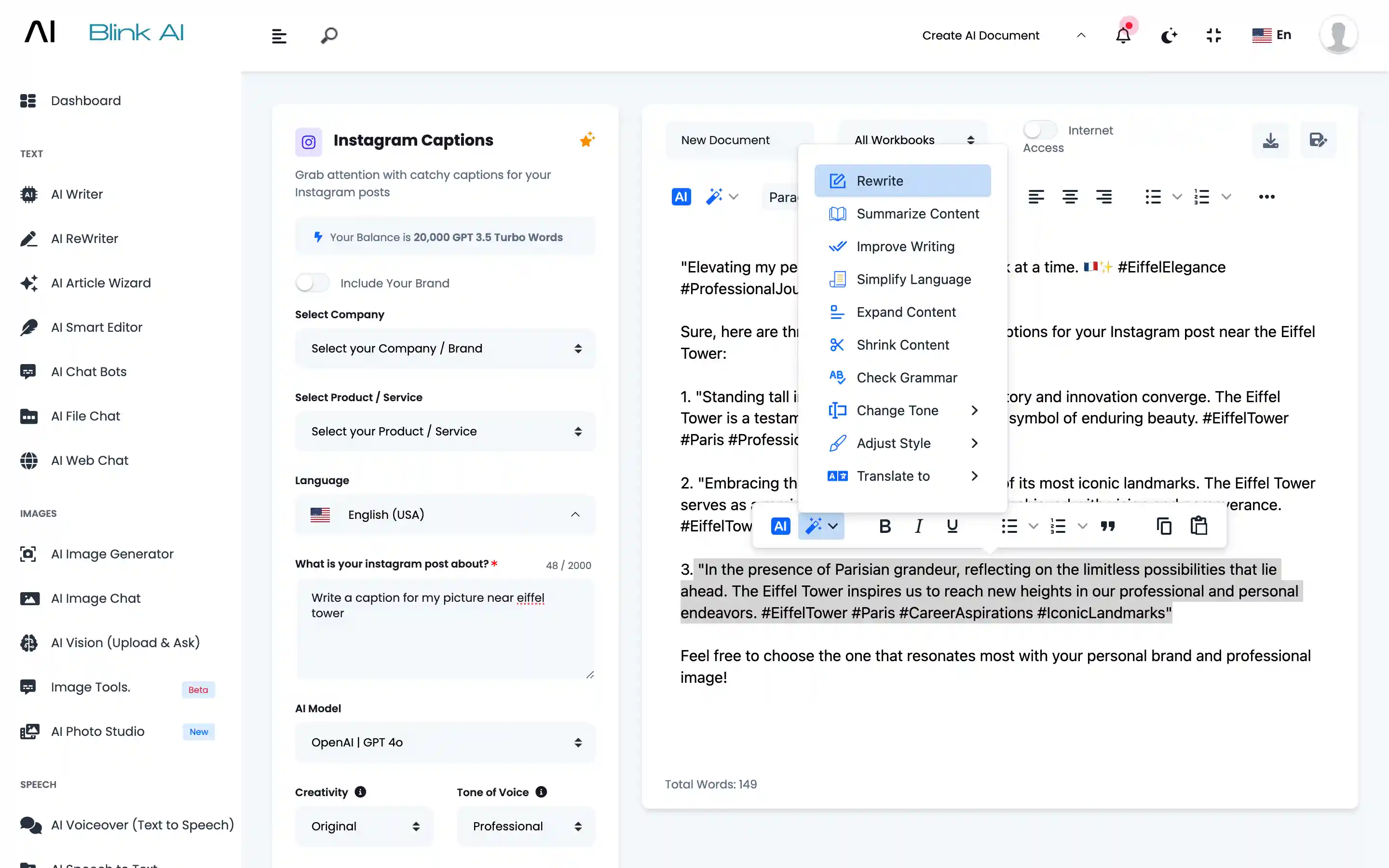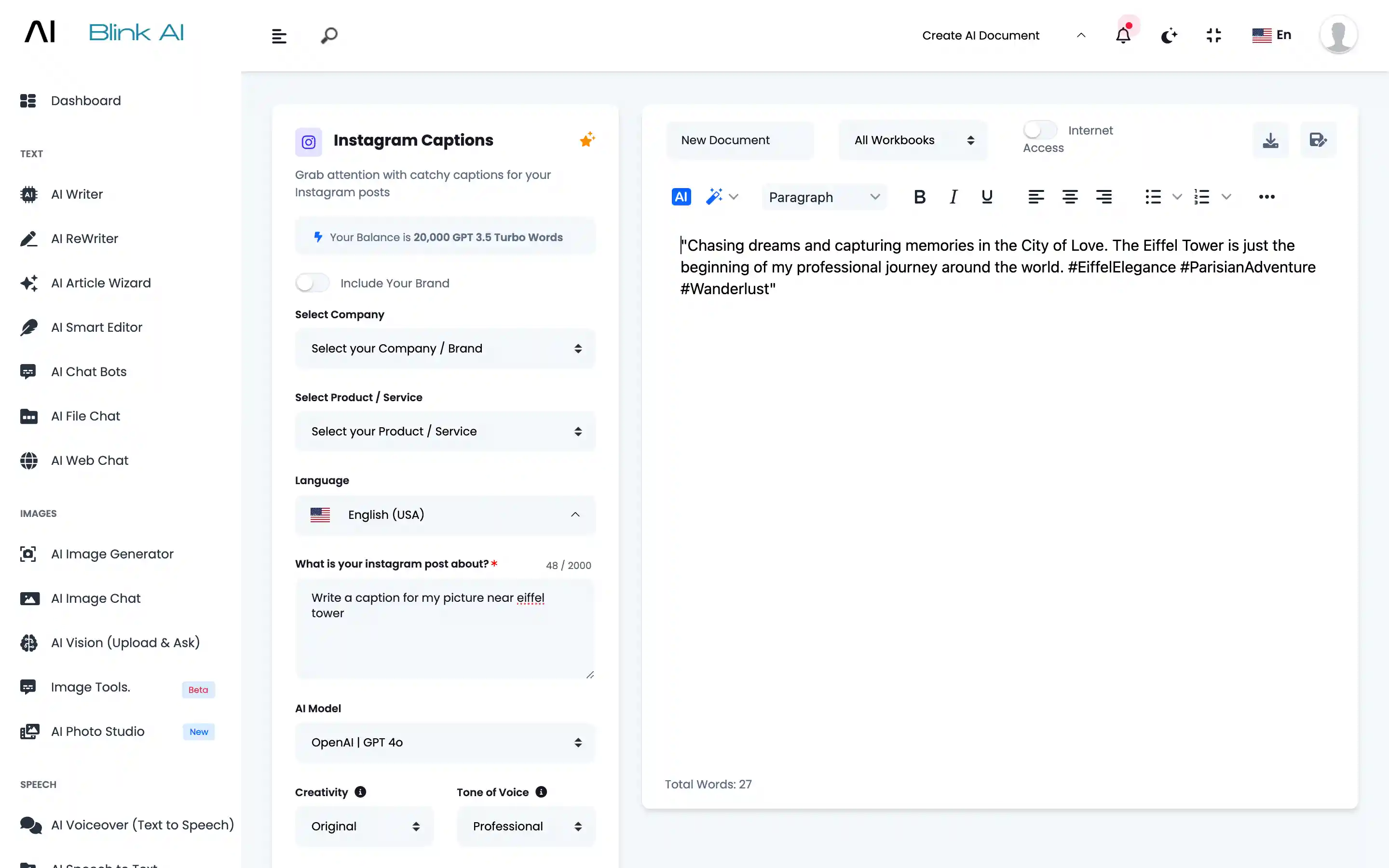Meet, BlinkAI – AI Content Generator: Text, Image, Video, Voice & Code
Tone Changer
One platform to generate all AI contents





AI Tone Changer
Change the tone of your writing to match your audience
About Tone Changer
ChatGPT Changing the tone of your writing to match your audience is crucial for effective communication. Whether you're addressing professionals, engaging with a casual audience, or writing for a specific demographic, adapting your tone ensures your message resonates and achieves the desired impact. Here’s a step-by-step guide on how to tailor your writing tone to suit your audience: Audience Research: Gather information about your audience’s demographics, interests, preferences, and behaviors. Consider their age, gender, education level, cultural background, and professional status. Audience Persona: Create detailed personas that represent different segments of your audience. This helps in visualizing who you’re writing for and what tone will appeal to them. Formal Tone: Use a formal tone for professional or academic audiences. This tone is characterized by precise language, proper grammar, and a respectful and serious approach. Avoid contractions, slang, and casual phrases. Example: “We are pleased to announce the launch of our new product line, designed to meet the highest standards of quality and performance.” Informal Tone: Opt for an informal tone when writing for a casual audience or when aiming for a conversational style. This tone is more relaxed, personal, and approachable. Use contractions, colloquialisms, and a friendly voice. Example: “Hey there! We’re excited to share our latest product with you. It’s awesome and we can’t wait for you to try it out!” Persuasive Tone: A persuasive tone is energetic, assertive, and motivational. It’s often used in marketing and sales to convince the audience to take a specific action. Use strong, positive language and compelling arguments. Example: “Don’t miss out on our exclusive offer! Transform your space with our innovative designs—order now and experience the difference!” Humorous Tone: Use humor to entertain and engage your audience. This tone is light-hearted, witty, and playful. It’s effective for brands with a fun and approachable personality. Example: “Why did the coffee file a police report? It got mugged! Speaking of mugs, check out our hilarious new designs—guaranteed to brighten your day!” Vocabulary: Choose words that your audience will understand and appreciate. Avoid jargon or technical terms if your audience is not familiar with them, and simplify complex ideas. Sentence Structure: Adjust the complexity of your sentences to match your audience’s reading level. Shorter, simpler sentences work well for a broader audience, while longer, more complex sentences may be appropriate for academic or professional readers. Formal Tone for a Business Report: “Our company’s quarterly performance has shown significant growth, attributable to strategic investments and market expansion. We anticipate continued success through the next fiscal year.” Informal Tone for a Social Media Post: “Guess what? Our company’s doing great! Thanks to you, we’ve grown so much this quarter. Here’s to more awesome times ahead!” Changing the tone of your writing to match your audience is a powerful tool for effective communication. By understanding your audience, defining your purpose, choosing the appropriate tone, and maintaining consistency, you can ensure your message resonates and achieves its intended impact. Tailoring your tone not only enhances engagement but also builds a stronger connection with your readers.1. Understand Your Audience
2. Define the Purpose of Your Writing
3. Choose the Right Tone
4. Use Appropriate Language and Style
5. Maintain Consistency
6. Incorporate Feedback
7. Revise and Edit
Example of Adapting Tone for Different Audiences
Conclusion
Steps for AI Writing
Start Writing Content in 3 Easy Steps
1
Step 1
AI Writer Section
Go to AI Writer section and select a template
2
Step 2
Details
Provide brief details about your requirement
3
Step 3
Generate
Generate, amend and save content
Discover AI Writer
How To Use Blink AI's AI Writer for Content Creation
Go to AI Writer Section
Choose from 70+ AI Writing Templates or Create your Own Template
Describe
You can provide details like what is the exact requirement. How many outputs you want. Which AI model you want to use.
Generate
Content will be generated based on your input.
Amend
Select the content you want to amend. Click on the Magic Wand to amend Generated Content.
Fresh Output
Fresh output will be generated. You can save it in Workbooks.
